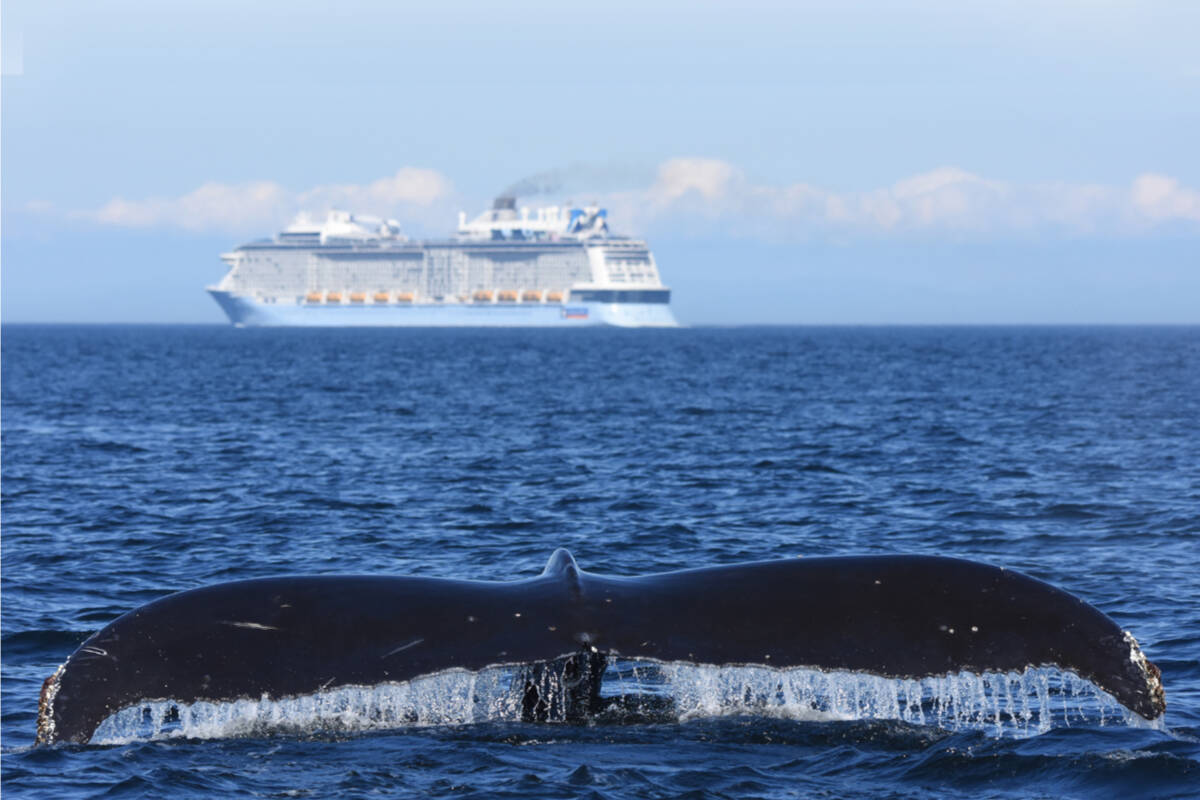A jump in documented humpback whales in the waters off B.C. this year marks what’s being called a “humpback comeback” by those in the businesses of preservation.
Nearly 400 humpbacks were documented in the Salish Sea this year. The 396 individuals documented include 34 mothers and their first-year calves.
It’s the most humpback whales documented in one year in the Salish Sea since records have been kept, according to Tasli Shaw, project lead for Humpback Whales of the Salish Sea (HWSS). In 2017, 293 humpbacks were documented in the same area.
“The Salish Sea is a place where many humpback whales have learned to find food and how best to capture it,” Shaw said in a news release. “There seems to be a public misconception that humpbacks simply migrate through this area. We see the highest number of sightings in the fall, and it is the same whales year after year who we see socializing, feeding, and resting within the waters of the Salish Sea.”
HWSS gathers sightings from researchers, ecotourism captains and naturalists, and other citizen scientists and feeds that information into the Canadian Pacific Humpback Collaboration, a consortium of organizations that share data to reduce threats to humpback whales in B.C. waters. They’re calling the “humpback comeback” remarkable, considering commercial whaling in B.C. ended only 55 years ago.
READ ALSO: Severely injured humpback travels from B.C. to Hawaii
Jackie Hildering, representing the Canadian Pacific Humpback Collaboration, feels society is lucky to have a second chance with this whale population.
“Their presence is a reminder that we can rapidly change our values and actions to not only benefit species, but whole ecosystems. Humpback whales fertilize the ocean, leading to more food, more oxygen production and more absorption of carbon dioxide,” Hildering said.
The organizations suggest the new statistics highlight the importance of the collaborative approach to documenting and protecting the humpback population from threats such as entanglement in fishing gear and increasing shipping traffic.
“The Salish Sea has become the whale equivalent of a busy school zone,” said Lisa Spaven, of the Fisheries and Oceans Canada Cetacean Monitoring and Research Project. “Our monthly surveys show that whales are present in all months throughout the region, making the Salish Sea an area of considerable year-round overlap between whales and both commercial and recreational vessel traffic and fishing.”
Of the 396 documented in 2022, most have been seen in the Salish Sea in previous years, indicating that they have clear preferences for where they choose to feed. As an example, Monarch – known to researchers as BCZ0180 – has returned to these busy feeding grounds for 20 years in a row and is often still feeding in the Salish Sea in winter.
Visit SeeABlowGoSlow.org to learn more about regulations and best practices.
Do you have a story tip? Email: newsroom@oakbaynews.com.
Follow us on Twitter and Instagram, and like us on Facebook.

